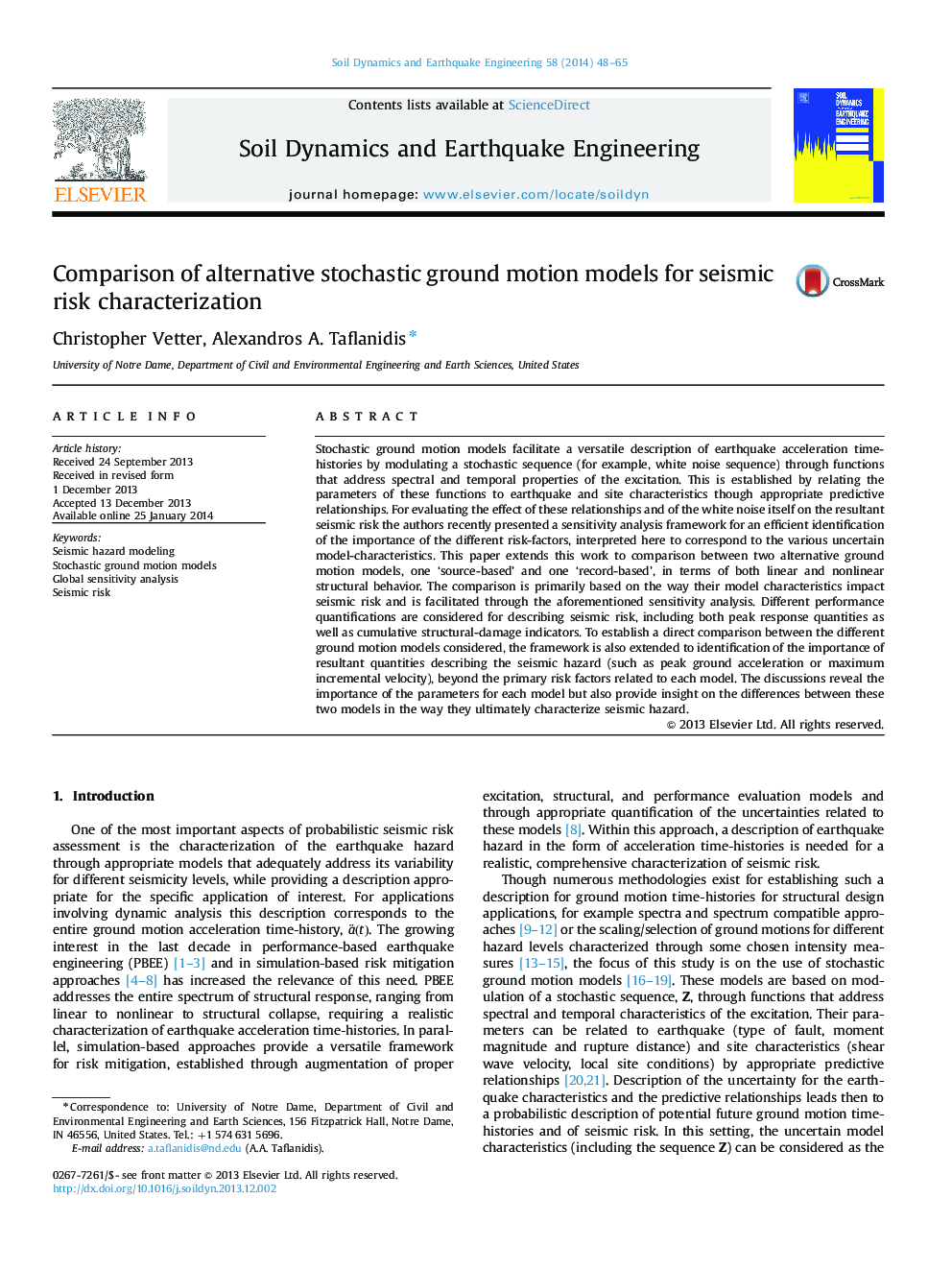| Article ID | Journal | Published Year | Pages | File Type |
|---|---|---|---|---|
| 6772706 | Soil Dynamics and Earthquake Engineering | 2014 | 18 Pages |
Abstract
Stochastic ground motion models facilitate a versatile description of earthquake acceleration time-histories by modulating a stochastic sequence (for example, white noise sequence) through functions that address spectral and temporal properties of the excitation. This is established by relating the parameters of these functions to earthquake and site characteristics though appropriate predictive relationships. For evaluating the effect of these relationships and of the white noise itself on the resultant seismic risk the authors recently presented a sensitivity analysis framework for an efficient identification of the importance of the different risk-factors, interpreted here to correspond to the various uncertain model-characteristics. This paper extends this work to comparison between two alternative ground motion models, one 'source-based' and one 'record-based', in terms of both linear and nonlinear structural behavior. The comparison is primarily based on the way their model characteristics impact seismic risk and is facilitated through the aforementioned sensitivity analysis. Different performance quantifications are considered for describing seismic risk, including both peak response quantities as well as cumulative structural-damage indicators. To establish a direct comparison between the different ground motion models considered, the framework is also extended to identification of the importance of resultant quantities describing the seismic hazard (such as peak ground acceleration or maximum incremental velocity), beyond the primary risk factors related to each model. The discussions reveal the importance of the parameters for each model but also provide insight on the differences between these two models in the way they ultimately characterize seismic hazard.
Related Topics
Physical Sciences and Engineering
Earth and Planetary Sciences
Geotechnical Engineering and Engineering Geology
Authors
Christopher Vetter, Alexandros A. Taflanidis,
